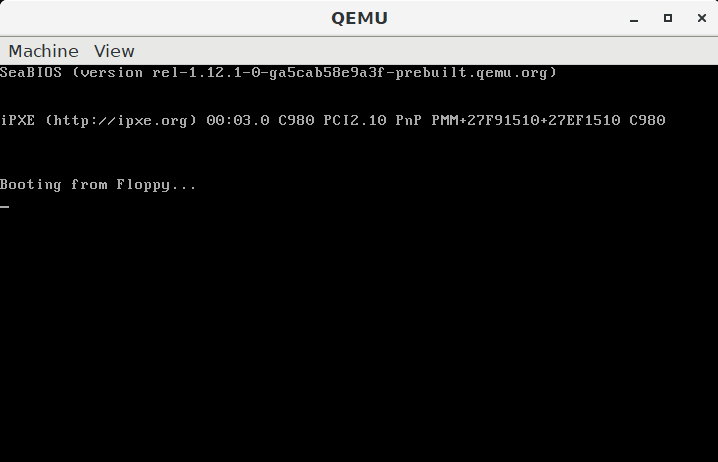This is the simple 32-bit operating system developed by the SKNI KOD (Studenckie Koło Naukowe Informatyków KOD). Our main goal is to create the OS which will have functionality similar to the famous MS-DOS and be able to run on every modern computer. Feel free to analyze and use any part of this project (but remember about GPL-3 license restrictions).
Full description of how to build MicrOS (on Linux or Windows 10 WSL) can be read here: https://github.com/jaenek/MicrOS-DevTools.
Documentation: https://tearth.github.io/MicrOS/
- Bootloader which loads the kernel by looking for a file in a FAT12 filesystem and enters the protected mode
- A set of drivers for the devices
- VGA - text and graphics mode
- Keyboard
- Floppy
- PC Speaker
- Serial port
- RTC (Real-Time Clock)
- PIT (Programmable Interval Timer)
- ATA
- Interrupts (software, hardware, exceptions) manager
- Paging
- Physical/Virtual memory manager
- Heap
- FAT12/16 filesystem - read and write
- Partitions
- PCI (Peripheral Component Interconnect) - partially
- Panic screen
- Userspace
- ELF executing
- Multitasking (with a primitive round-rubin scheduler)
- Multiterminals
- Simple shell and basic applications
- Standard library for C
- ATA Hard disk drive support
- CPUID
- Other standards of hard disk drive support
- More advanced scheduler with priorities and IO blocking
- Support for network cards (and protocols related to them)
- Support for threads
- Lock/mutex, synchronization objects, queues...
- ...
- Visual Studio Code - main IDE
- GCC - C compiler and linker
- NASM - asm compiler
- GDB - debugger
- ImDisk - managing floppy images
- dd - writing bootloader to the image
Screenshot of the boot sequence, taken during early development. Besides standard logs indicating the success of initialization OS components, there is also a test of reading file (/SYSTEM/TEST/LOREM.TXT) and heap dump to detect possible memory leaks.
Test of the multitasking with five processes, where each one increments its internal counters and prints the value to the console. Each process manages to do these operations 4 times per time slice assigned by the OS before a switch to the next process.
A simple shell that allows executing other applications. Using Ctrl+F1/F2/F3/F4 user can switch to another terminal and run an application simultaneously with other ones.
Task manager displaying basic info about the current operating system state. There are two bars (with processor utilization and memory usage) and a tree with all processes - initially, OS runs 4 terminals where each of it can run its child process (like TASKS or SNAKE here).
Example of working CAT application with KERNEL.BIN file given in the parameter. It displays the first 1600 bytes of the binary content (so that's why there are a ton of strange chars).
Example game made for MicrOS. It's a simple implementation of a snake game, with the list of best players saved in the separate file.
Animation presenting interaction with the MicrOS for basic operations like displaying time, list of files, changing the current directory, and executing a game.










